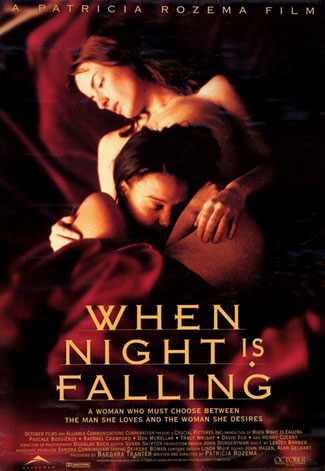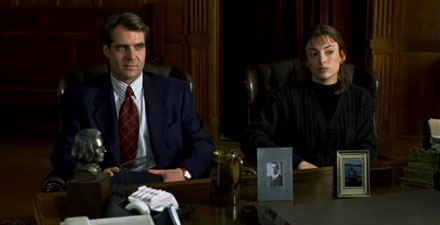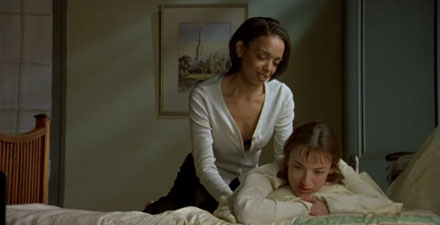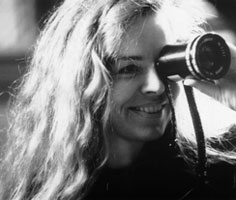| When Night Is Falling |
|
Fiction. Canada. 1995. Couleur. 95'. VO/ST. Distr. : Patricia Rozema
|
 |
|
 |
|
 |
|
| |
Camille et Martin enseignent dans une université calviniste. Leur prochain mariage les destine tous deux à une brillante carrière académique, ce dont se réjouit à l'avance le révérend De Boer (le chapelain en chef) qui ne manque pas de rappeler aux deux promis , le jour du check up spirituel et moral, "qu'il n'existe pas au monde de livre saint qui ne réprouve l'homosexualité". Seulement voilà, Camille rencontre et désire Petra, artiste dans un cirque d'avant-garde...
Camille, a professor at a Protestant college, is engaged to Martin, a sympathetic minister and fellow professor. As "career Christians", they are urged to get married and to become co-chaplains of the New College of Faith. But Camille is vaguely unhappy with Martin and her life, and when her beloved dog dies suddenly, she begins to lose her grip. On the same day, in a laundromat, Camille meets Petra, a flamboyant circus performer, and is inexplicably attracted to her. Petra flirts brazenly with Camille. She draws her into the seductive world of the "modern primitive" circus. The two become friends, then more. For the first time in her proper and very intellectual life, Camille's desire comes rushing forward. She is shocked to find that she is infatuated with Petra. Soon, she believes that she is in love. But all is not well with the circus. Hounded by creditors, the circus must leave town, threatening to tear the new lovers apart. Meanwhile, part of Camille is still deeply attached to Martin, as he is to her. Terrified at the prospect of radical change, Camille is compelled to make a choice between the woman she wants and a man that she has loved. For Camille, the true duty of the soul is desire.
|
|
|
 © 1995 October Films |
|
Patricia Rozema |
www.patriciarozema.com |
|
Les films de Patricia Rozema, bien que variés dans le style et le contenu, ont toujours été marqués par une sensibilité humaine et tendre. Née à Kingston, en Ontario, et élevée dans la petite ville de Sarnia, dans une famille d'immigrants calvinistes néerlandais où la télévision était sévèrement restreinte, Patricia Rozema n'est pas allée au cinéma avant l'âge de 16 ans. Elle a ensuite étudié la philosophie au Calvin College et au Séminaire du Michigan. Après un bref passage dans le journalisme, son premier long métrage intitulé Le chant des sirènes, un film réaliste magique a fait l'un des débuts les plus marquants de l'histoire du cinéma canadien. En 1995, elle écrit et réalise une histoire d'amour lesbienne, When Night is Falling, qui a remporté de nombreux prix à travers le monde et reste un film culte.
Patricia Rozema's films, though varied in style and content, have always been marked by a humane and tender sensibility. Her work invariably shows social prescience and deep humanity. Born in Kingston, ON and raised in the small town of Sarnia, ON in a Dutch Calvinist immigrant family where television was severely restricted, Rozema didn't go to a movie theatre until she was 16 years old. Rozema then studied philosophy at Calvin College and Seminary in Michigan (Paul Shrader's alma mater). After a brief stint in journalism, her first feature, "I've Heard the Mermaids Singing," a magical realist film about a socially inept secretary in an art gallery made one of the most outstanding feature debuts in the history of Canadian cinema. In 1995, she wrote and directed a lesbian love story, "When Night is Falling," which won festival audience prizes around the world and remains a classic in the gay community.
|
|